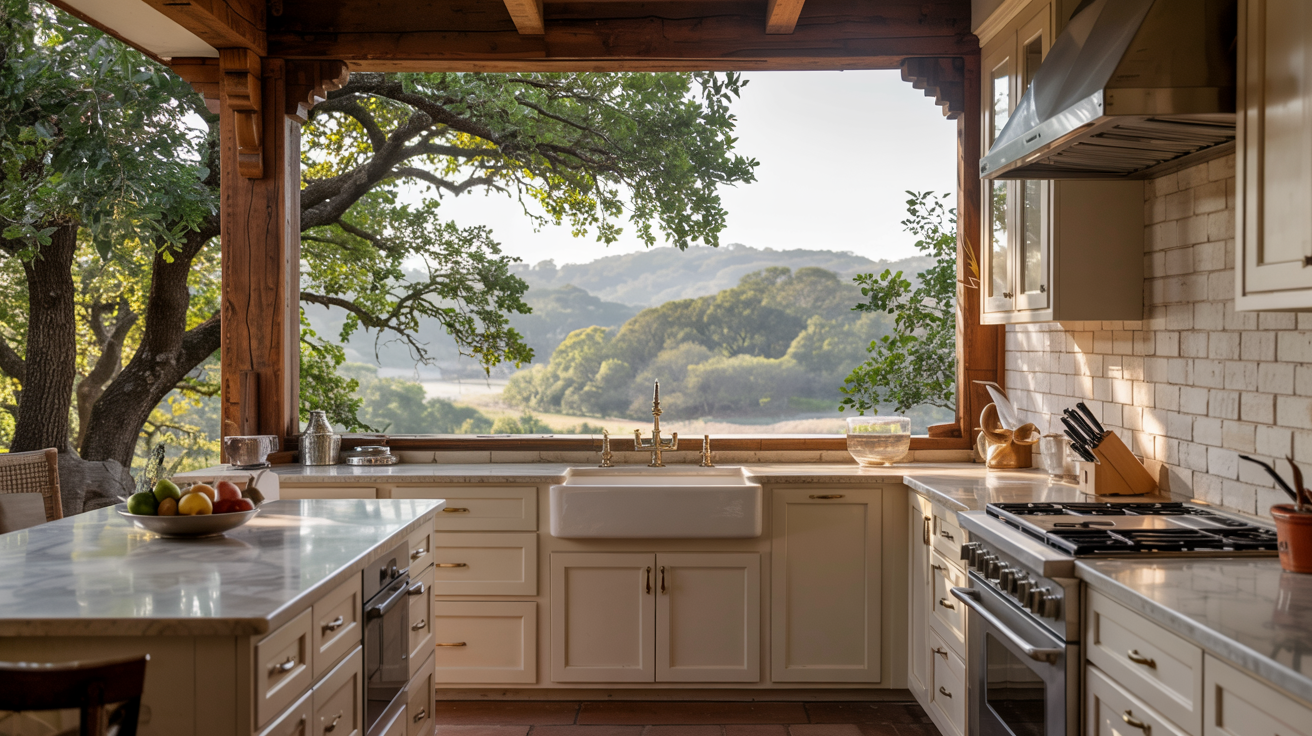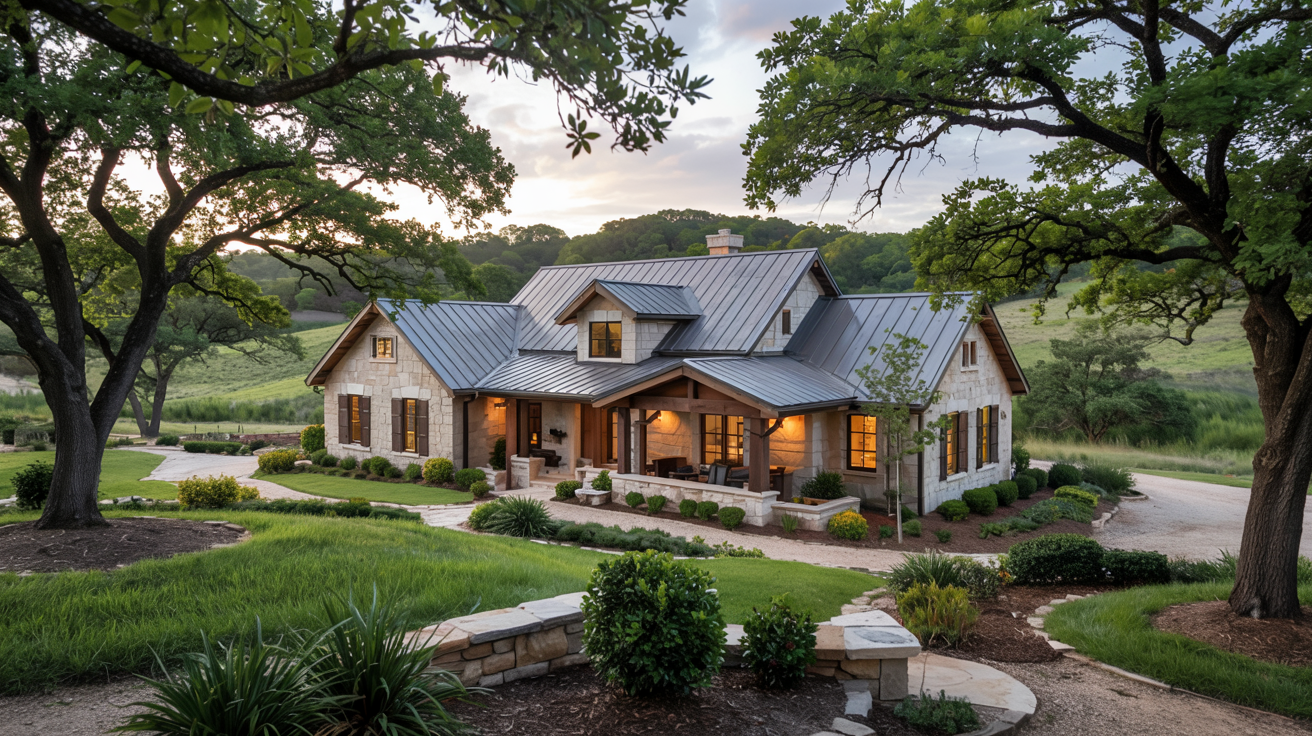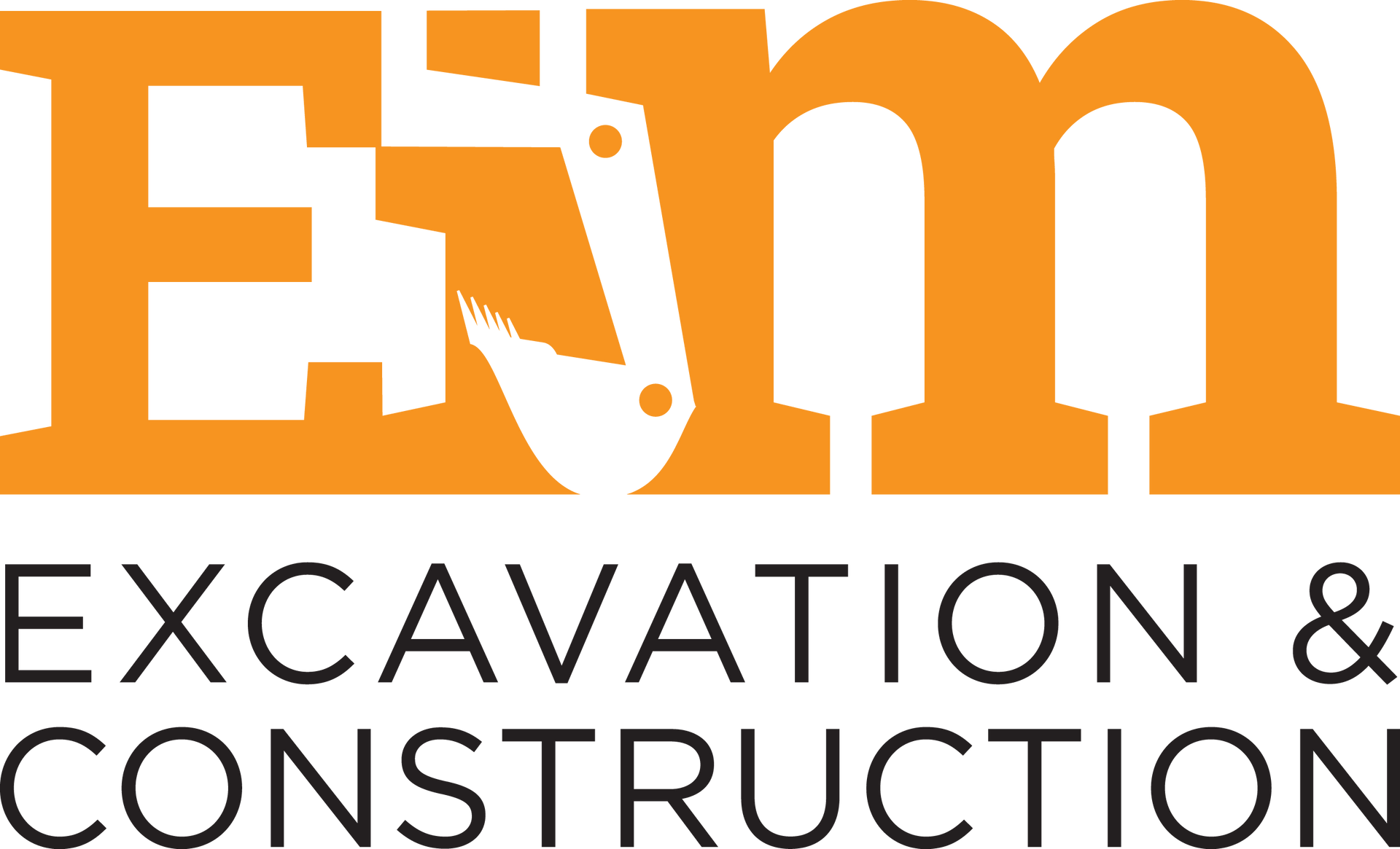Small Backyard Pond: Expert Guide to Design and Build
Why Your Small Backyard Pond Dreams Keep Getting Delayed
A small backyard pond represents one of the most rewarding projects you can tackle in your outdoor space, but I've seen too many homeowners get overwhelmed by conflicting advice and unrealistic expectations. After twenty years in construction and founding Earth in Motion here in Austin, I've built hundreds of water features across Texas and Colorado, and I can tell you that the difference between a successful pond and a maintenance nightmare comes down to understanding what you're really getting into before you break ground.
The truth is, most people approach pond building backward. They fall in love with a picture or visit a friend's beautiful water garden, then jump straight to "how much will this cost me?" without thinking through the fundamental decisions that will make or break their project. Your pond's success depends on matching the design to your specific site conditions, maintenance capacity, and long-term goals.
The Three Types of Small Backyard Pond Projects I Build
In my experience working with homeowners from the Colorado Rockies to the Texas Hill Country, every successful small backyard pond falls into one of three categories. Understanding which type fits your situation will save you time, money, and frustration down the road.
The Simple Wildlife Habitat Pond
This is often where I recommend first-time pond owners start. You're creating a natural-looking water feature that attracts birds, beneficial insects, and small wildlife without the complexity of fish care or elaborate filtration systems. These ponds work beautifully in partially shaded areas where you might struggle to grow traditional landscaping.
The key to success here is keeping things simple and working with nature rather than against it. I design these with gentle slopes, native aquatic plants, and minimal mechanical systems. The maintenance commitment stays manageable because you're not fighting algae blooms or worrying about fish health during our brutal Texas summers.
The Ornamental Garden Pond
These are the showstoppers—ponds designed primarily for visual impact with crystal-clear water, architectural edging, and perhaps a fountain or waterfall feature. They require more sophisticated filtration and regular maintenance, but they become genuine focal points that can transform your entire backyard.
I've built ornamental ponds that serve as the centerpiece for outdoor entertainment areas, creating that resort-like atmosphere homeowners crave. The investment in proper filtration and water circulation pays off in dramatically reduced maintenance once the system finds its balance.
The Fish Ecosystem Pond
This is where pond keeping becomes a hobby. You're creating a living ecosystem that supports koi, goldfish, or native species. These ponds demand the most planning because fish create waste, require specific water chemistry, and need protection from predators and temperature extremes.
In Texas, I always design fish ponds with extra depth to provide cool water refuge during summer heat waves. The filtration requirements jump significantly, but there's nothing quite like watching colorful koi glide through your backyard sanctuary.
Site Selection Secrets That Most Contractors Miss
I've seen beautiful pond installations fail because nobody thought carefully about placement. Your small backyard pond location determines everything from maintenance requirements to long-term durability.
The Sunlight Balance
Most people think ponds need full sun, but that's rarely true, especially here in Austin where summer sun can turn water into a hot tub. I look for spots with morning sun and afternoon shade, or areas that get four to six hours of direct sunlight. This supports healthy plant growth while preventing excessive algae and reducing evaporation.
In Colorado projects, I dealt with intense mountain sun at elevation, which taught me that even in cooler climates, some shade protection extends the pond season and reduces maintenance.
Drainage and Water Flow
Your pond needs to be positioned where it won't become a collection point for lawn runoff loaded with fertilizers and debris. I always evaluate natural drainage patterns before recommending placement. Sometimes this means choosing a slightly less visible location to ensure long-term water quality.
I also consider proximity to water sources for topping off during dry spells and electrical access for pumps and lighting. Planning these utilities during site selection prevents expensive complications later.
Underground Utilities and Future Access
Before any excavation begins, I require a complete utility locate. I've seen too many projects delayed or damaged by surprise utility lines. Beyond safety, I think about long-term access for maintenance equipment and potential expansions.
Construction Approach: Why Proper Planning Prevents Problems
The construction phase is where your preliminary decisions either pay off or cause headaches. My approach focuses on building systems that work reliably with minimal ongoing intervention.
Excavation Strategy for Texas Conditions
Texas soil presents unique challenges that I've learned to work with over the years. Our clay soils can provide natural water retention but also create drainage issues during heavy rains. I design pond profiles that account for both seasonal flooding and drought conditions.
The excavation process itself affects your pond's long-term stability. I create varied depths not just for aesthetic reasons, but to establish thermal layers that help regulate temperature and provide different habitat zones for plants and fish.
Liner Selection and Installation
The liner choice impacts everything from initial cost to maintenance requirements and lifespan. I evaluate each project individually, considering factors like soil conditions, expected use, and budget constraints.
Preformed liners offer reliability and faster installation but limit design flexibility. Flexible membrane liners allow custom shapes but require more careful installation to prevent punctures and ensure proper edge sealing. The key is matching the liner type to your specific site conditions and design goals.
I always install protective underlayment and take extra care during backfilling to prevent damage from settling or root intrusion. These details aren't glamorous, but they determine whether your pond lasts five years or twenty.
Filtration System Design
This is where many pond projects go wrong. Homeowners either over-engineer expensive systems they don't need or underestimate filtration requirements and end up with maintenance nightmares.
For wildlife ponds, I often recommend minimal mechanical filtration, relying instead on carefully selected plants and natural bacterial processes. Ornamental ponds need more aggressive filtration to maintain water clarity. Fish ponds require the most sophisticated systems to handle biological waste loads.
The goal is designing filtration that matches your pond's bioload and your maintenance preferences. A properly sized system runs efficiently and requires minimal intervention once established.
Plant Selection for Texas Climate Success
Plants make or break pond ecosystems, especially in challenging climates like ours. I've learned which species thrive in Texas heat and which ones struggle despite looking great in nursery displays.
Native Species That Actually Work
I always start with native aquatic plants adapted to local conditions. They establish faster, require less maintenance, and support local wildlife better than exotic species. Plants like American lotus, pickerel rush, and native water lilies have proven reliable across dozens of installations.
Native species also handle our temperature extremes better. While exotic plants might look spectacular initially, they often struggle during July heat waves or unexpected late freezes.
Functional Plant Zones
I design plant communities with specific functions in mind. Submerged plants oxygenate water and compete with algae. Floating plants provide shade and fish cover while absorbing nutrients. Marginal plants create natural-looking edges and provide habitat for beneficial insects.
The key is balancing these different plant types to create a self-sustaining ecosystem that looks natural while requiring minimal intervention.
Maintenance Reality: What Nobody Tells You
Here's what I tell every client during our initial consultation: every pond requires maintenance, but good design minimizes the workload. Understanding maintenance requirements upfront prevents disappointment later.
Seasonal Maintenance Cycles
Texas pond maintenance follows predictable seasonal patterns that I've refined over hundreds of installations. Spring requires cleaning accumulated winter debris and restarting filtration systems. Summer focuses on algae management and water level monitoring during drought periods.
Fall preparation involves plant trimming and leaf management to prevent organic buildup. Winter maintenance is minimal in our climate, mainly involving equipment protection during occasional freezes.
I provide clients with customized maintenance schedules based on their specific pond design and local conditions.
Water Quality Management
Maintaining proper water chemistry sounds complicated, but it becomes routine once you understand the basics. I teach clients to monitor key parameters and recognize warning signs before problems develop.
The goal is establishing biological balance where beneficial bacteria, plants, and fish (if present) maintain water quality naturally. This takes time to develop but dramatically reduces ongoing maintenance once achieved.
Equipment Care and Longevity
Pumps, filters, and UV sterilizers require periodic attention to function reliably. I design systems with maintenance access in mind and specify equipment appropriate for each installation's demands.
Regular equipment maintenance prevents expensive replacements and ensures your pond operates efficiently year-round.
Cost Factors That Drive Your Investment
Pond costs vary dramatically based on decisions made during planning and design phases. Understanding these cost drivers helps you make informed choices that align with your budget and expectations.
Size and Complexity Impact
Larger ponds generally offer better cost efficiency per square foot because fixed costs like excavation setup and equipment get spread over more area. However, small ponds can be incredibly cost-effective when designed appropriately for their intended use.
Complexity factors like multiple depth zones, elaborate filtration systems, extensive stonework, and specialized features drive costs more than simple size increases.
Site Conditions and Accessibility
Your specific site dramatically affects construction costs. Rocky soil requires different excavation approaches than clay. Limited access for equipment changes the construction process. Steep slopes or confined spaces affect both design options and installation methods.
I always evaluate site conditions during initial consultations because these factors influence both design recommendations and project investment levels.
Material Quality and Longevity
Like most construction projects, pond components range from economy to premium options. Higher-quality liners, pumps, and filtration equipment cost more initially but often provide better long-term value through reduced maintenance and longer service life.
I help clients understand these trade-offs and select components that match their performance expectations and maintenance preferences.
When to DIY vs. Professional Installation
I respect homeowners who want to tackle projects themselves, but pond construction involves specific challenges that can cause expensive problems if handled incorrectly.
Skills and Tools Required
Successful pond construction requires excavation skills, understanding of water dynamics, electrical knowledge for pumps and lighting, and plumbing experience for filtration systems. Many homeowners underestimate the complexity involved.
Specialized tools like compact excavators, laser levels for proper grading, and pond-specific equipment make professional installation more efficient and reliable.
Hidden Complications That Emerge
Pond projects frequently encounter unexpected issues like utility conflicts, drainage problems, or challenging soil conditions that require experience to solve effectively. What starts as a weekend project can stretch into months of frustration.
My experience across hundreds of installations helps me anticipate and address these complications before they become expensive problems.
Long-term Support and Warranty
Professional installation includes ongoing support for troubleshooting, seasonal adjustments, and equipment issues. This support system proves valuable when problems arise or when you want to modify or expand your pond later.
Common Mistakes That Turn Dreams into Nightmares
I've seen every possible pond mistake during my twenty years in construction. Learning from others' errors can save you significant time and money.
Undersized Filtration Systems
The most common mistake I encounter is inadequate filtration for the pond's biological load. Homeowners often try to save money on filtration equipment, then struggle with water quality issues that require constant attention.
Proper filtration sizing considers not just water volume but expected fish populations, feeding schedules, and local climate factors that affect biological processes.
Poor Plant Selection and Placement
Plants that look great at the nursery may not thrive in your specific pond conditions. I've removed countless inappropriate plants that either died quickly or grew aggressively and took over the entire ecosystem.
Successful plant selection requires understanding each species' requirements and how they'll interact with your pond's specific conditions over time.
Ignoring Seasonal Temperature Extremes
Texas weather tests pond systems with hundred-degree summers and occasional hard freezes. Designs that don't account for these extremes struggle during challenging periods and require expensive modifications later.
I design ponds with adequate depth for temperature buffering and select equipment rated for our climate extremes.
Why Earth in Motion Approaches Are Different
My military background and twenty years of construction experience taught me that successful projects start with thorough planning and realistic expectations. I don't just build ponds—I create water feature systems designed for long-term success with minimal ongoing problems.
Every project begins with detailed site evaluation and honest discussion about maintenance requirements, operating costs, and performance expectations. This upfront investment in planning prevents the disappointments and cost overruns that plague many pond projects.
As a certified Service-Disabled Veteran-Owned Small Business, I bring military precision to project management while maintaining the flexibility needed for custom residential work. Your pond project gets the attention and expertise it deserves from initial consultation through final commissioning.
Whether you're dreaming of a simple wildlife habitat or an elaborate koi paradise, your small backyard pond success depends on working with someone who understands both the technical requirements and the long-term commitment involved in creating and maintaining these beautiful water features.
Frequently Asked Questions About Small Backyard Ponds
What factors determine the cost of building a small backyard pond?
The investment in your small backyard pond depends on several key factors I evaluate during our initial consultation. Size and complexity drive costs more than any other factor—a simple wildlife habitat pond requires minimal equipment while a fish ecosystem pond needs sophisticated filtration systems. Your specific site conditions dramatically impact the project investment, as rocky Austin soil requires different excavation approaches than clay, and limited equipment access changes our construction methods. Material quality choices also influence costs, where premium liners and filtration equipment cost more initially but provide better long-term value through reduced maintenance. At Earth in Motion, I help you understand these trade-offs so you can select components that match your performance expectations and budget.
How do I choose between a wildlife pond, ornamental pond, or fish ecosystem pond?
After building hundreds of water features across Texas and Colorado, I've found that matching the pond type to your maintenance capacity and long-term goals determines project success. Wildlife habitat ponds work beautifully for first-time pond owners who want to attract birds and beneficial insects without complex filtration systems—these thrive in partially shaded areas and require minimal maintenance. Ornamental garden ponds become genuine focal points with crystal-clear water and architectural features, but they need more sophisticated filtration and regular care. Fish ecosystem ponds demand the most planning because they require specific water chemistry, protection from predators, and extra depth for our brutal Texas summers. I guide clients through this decision based on their specific site conditions and lifestyle preferences.
Where should I locate my small backyard pond for optimal success?
Pond placement determines everything from maintenance requirements to long-term durability, and I've seen beautiful installations fail because nobody thought carefully about location. I look for spots with morning sun and afternoon shade, or areas receiving four to six hours of direct sunlight—this supports healthy plant growth while preventing excessive algae during Austin's intense summer heat. Your pond needs positioning where it won't collect lawn runoff loaded with fertilizers and debris, so I evaluate natural drainage patterns before recommending placement. I also consider proximity to water sources for seasonal topping off and electrical access for pumps and lighting. Before any excavation begins, I require complete utility locates because I've seen too many projects delayed by surprise utility lines.
What maintenance should I expect with my small backyard pond?
Every pond requires maintenance, but good design minimizes the workload—that's what I tell every client during our initial consultation. Texas pond maintenance follows predictable seasonal patterns I've refined over hundreds of installations: spring requires cleaning winter debris and restarting filtration systems, summer focuses on algae management and water level monitoring during drought periods, fall involves plant trimming and leaf management, while winter maintenance stays minimal in our climate. The goal is establishing biological balance where beneficial bacteria, plants, and fish maintain water quality naturally. This takes time to develop but dramatically reduces ongoing maintenance once achieved. I provide clients with customized maintenance schedules based on their specific pond design and local Austin conditions.
Should I attempt DIY installation or hire Earth in Motion for professional construction?
While I respect homeowners who want to tackle projects themselves, pond construction involves specific challenges that can cause expensive problems if handled incorrectly. Successful pond installation requires excavation skills, understanding of water dynamics, electrical knowledge for pumps and lighting, and plumbing experience for filtration systems—many homeowners underestimate this complexity. Pond projects frequently encounter unexpected issues like utility conflicts, drainage problems, or challenging soil conditions that my twenty years of experience helps me anticipate and solve before they become expensive complications. At Earth in Motion, professional installation includes ongoing support for troubleshooting, seasonal adjustments, and equipment issues, plus my military precision in project management ensures your pond project gets completed correctly the first time with realistic timelines and expectations.



